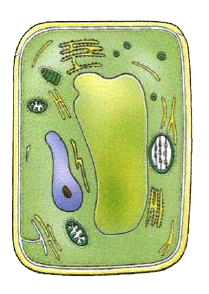Explain mechanism of breathing with neat labelled diagram.
Step-by-Step Solution for the Mechanism of Breathing
Step 1: Definition of Breathing
Breathing is defined as the process of gas exchange, primarily involving the inhalation of oxygen and the exhalation of carbon dioxide.
Step 2: Processes of Breathing
Breathing consists of two main processes:
- Inspiration (Inhalation): The process of taking air into the lungs.
- Expiration (Exhalation): The process of expelling air from the lungs.
Step 3: Muscles Involved
The primary muscles involved in breathing are:
- Diaphragm: A dome-shaped muscle located at the base of the thoracic cavity.
- Intercostal Muscles: Muscles located between the ribs.
Step 4: Mechanism of Inspiration
1. Contraction of Muscles: During inhalation, the diaphragm contracts and moves downward, while the intercostal muscles contract to raise the ribs.
2. Increase in Thoracic Volume: This contraction increases the volume of the thoracic cavity, leading to an increase in lung volume.
3. Pressure Change: As the lung volume increases, the pressure inside the lungs decreases (creating a vacuum).
4. Air Flow: Air from the outside, which is at a higher pressure, flows into the lungs to equalize the pressure.
Step 5: Mechanism of Expiration
1. Relaxation of Muscles: During exhalation, the diaphragm relaxes and moves upward, while the intercostal muscles relax, causing the ribs to lower.
2. Decrease in Thoracic Volume: This relaxation decreases the volume of the thoracic cavity, leading to a decrease in lung volume.
3. Pressure Change: As the lung volume decreases, the pressure inside the lungs increases.
4. Air Flow: The air inside the lungs, now at a higher pressure, is expelled out into the environment where the pressure is lower.
Step 6: Diagram
A neat labeled diagram should illustrate the following:
- The diaphragm and its position during inhalation and exhalation.
- The intercostal muscles and their role in rib movement.
- Arrows indicating the flow of air into and out of the lungs.
- Labels for the thoracic cavity, lungs, diaphragm, and intercostal muscles.
Breathing is defined as the process of gas exchange, primarily involving the inhalation of oxygen and the exhalation of carbon dioxide.
Breathing consists of two main processes:
- Inspiration (Inhalation): The process of taking air into the lungs.
- Expiration (Exhalation): The process of expelling air from the lungs.
The primary muscles involved in breathing are:
- Diaphragm: A dome-shaped muscle located at the base of the thoracic cavity.
- Intercostal Muscles: Muscles located between the ribs.
1. Contraction of Muscles: During inhalation, the diaphragm contracts and moves downward, while the intercostal muscles contract to raise the ribs.
2. Increase in Thoracic Volume: This contraction increases the volume of the thoracic cavity, leading to an increase in lung volume.
3. Pressure Change: As the lung volume increases, the pressure inside the lungs decreases (creating a vacuum).
4. Air Flow: Air from the outside, which is at a higher pressure, flows into the lungs to equalize the pressure.
1. Relaxation of Muscles: During exhalation, the diaphragm relaxes and moves upward, while the intercostal muscles relax, causing the ribs to lower.
2. Decrease in Thoracic Volume: This relaxation decreases the volume of the thoracic cavity, leading to a decrease in lung volume.
3. Pressure Change: As the lung volume decreases, the pressure inside the lungs increases.
4. Air Flow: The air inside the lungs, now at a higher pressure, is expelled out into the environment where the pressure is lower.
A neat labeled diagram should illustrate the following:
- The diaphragm and its position during inhalation and exhalation.
- The intercostal muscles and their role in rib movement.
- Arrows indicating the flow of air into and out of the lungs.
- Labels for the thoracic cavity, lungs, diaphragm, and intercostal muscles.
Topper's Solved these Questions
- SELF ASSESSMENT PAPER -2BOOK - ICSECHAPTER - SELF ASSESSMENT PAPER -2EXERCISE - PART II (SECTION B )
15 Videos
- SELF ASSESSMENT PAPER -1 BOOK - ICSECHAPTER - SELF ASSESSMENT PAPER -1 EXERCISE - PART II ( SECTION C)
6 Videos
- SELF ASSESSMENT PAPER 4BOOK - ICSECHAPTER - SELF ASSESSMENT PAPER 4EXERCISE - Part - II SECTION - C (Answer all questions)
7 Videos
Similar Questions
Explain the mechanism of breathing with neat labelled sketches.
View SolutionLabel the diagram.

View SolutionWhat is stomatal apparatus? Explain the structure of stomata with a labelled diagram.
View SolutionWhat is stomatal apparatus? Explain the structure of stomata with a labelled diagram.
View SolutionExplain briefly, with the help of a neat labelled diagram, how does white light get dispersed by a prism.
On which surface of a prism, there is both dispersion and deviation of light, and on which surface of the prism, there is only deviation of light?
View SolutionDraw a neat and labelled diagram of a tooth.
View SolutionDraw a neat and labelled diagram of a neuron.
View SolutionA block and tackle system of pulleys has velocity ratio 4.
Draw a neat labelled diagram of the system indicating clearly the points of application and direction of load and effort.
View SolutionExplain meiosis with the help of labelled diagrams.
View SolutionDraw neat labeled diagram of a d.c. motor.
View Solution
